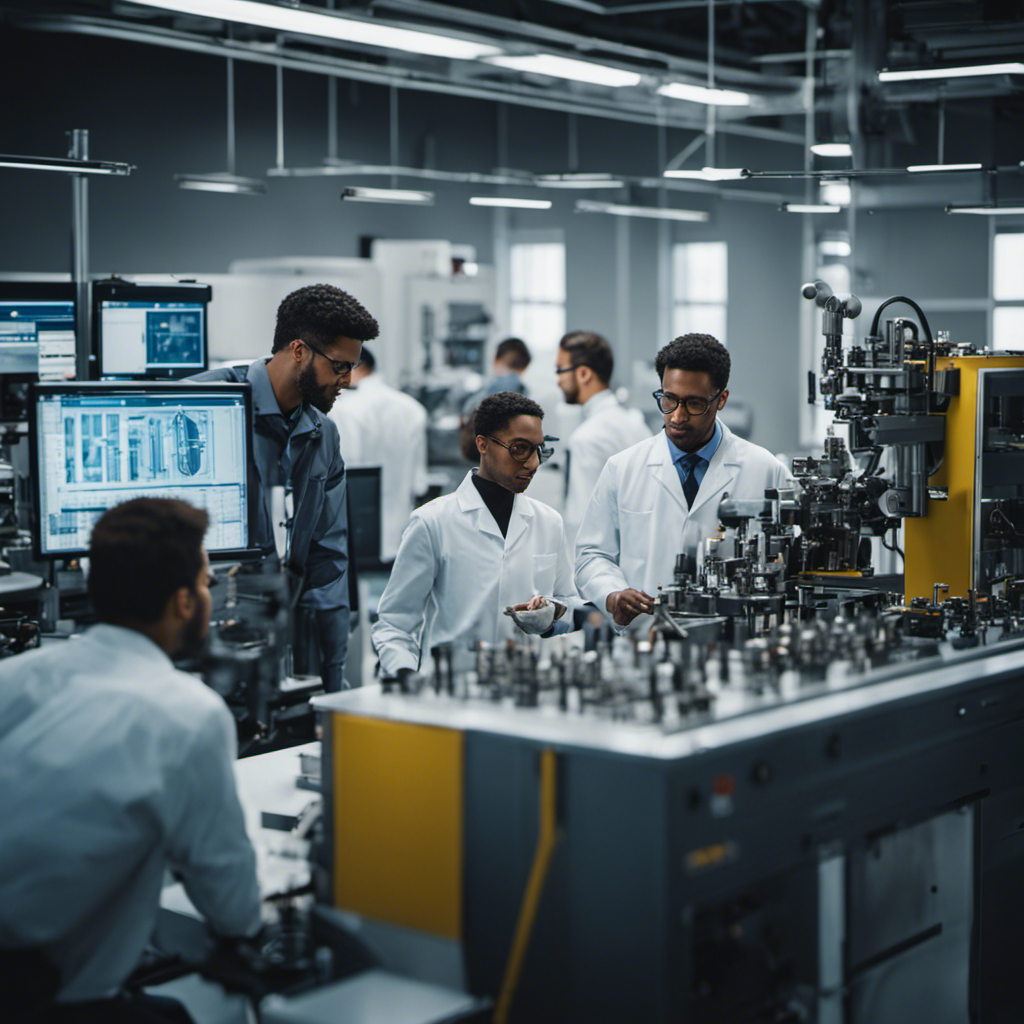Mechanical Engineering Fun Facts can illuminate key innovations and concepts in the field. This guide reveals surprising historical snippets alongside modern principles to engage students. Learn fascinating tips spanning early machines, manufacturing, robotics, and more that shaped mechanical engineering.
Introduction
Overview of Mechanical Engineering
Mechanical engineering is one of the oldest and broadest engineering disciplines. Mechanical engineers design, build, test, and improve all types of machines, tools, engines, and mechanical parts and systems. From bicycles and cars to jumbo jets, industrial machinery, and renewable energy systems, mechanical engineers play key roles in analyzing, manufacturing, and operating mechanical devices of all sizes and complexities. Mechanical engineers are involved in understanding how things work and how different components are put together to create machines and systems.
Some of the major areas within mechanical engineering include thermodynamics and heat transfer, manufacturing processes and production methods, mechanics and structural analysis, kinematics and system dynamics, as well as emerging fields like robotics, automation, and mechatronics. Mechanical engineers use their knowledge of physics, materials science, and mechanical systems across these domains to analyze static and dynamic forces, thermal/fluid flows, material properties, control systems, and more on the way to creating safe, useful products and machines.
Why Fun Facts Are Helpful for Students
Learning some fun, interesting, and surprising facts about mechanical engineering and its history can help make the field more engaging, approachable, and exciting for students. Fun facts give brief glimpses into key innovations, inventors, and devices from the past to the present that shaped mechanical engineering. These bits of information are designed to stick in your mind and motivate students to dig deeper into mechanical engineering concepts. This article will highlight fun facts both old and new across important topic areas in mechanical engineering. Appreciating the fascinating history and future opportunities within the field can hopefully inspire today’s engineering students to become the innovators and problem-solvers of tomorrow.
Early History of Mechanical Engineering
Key Early Innovations and Pioneers
The origins of mechanical engineering as a field date back thousands of years to basic inventions like the wheel, pulley, and lever. These simple yet profoundly important devices formed the foundation of mechanical systems. In the ancient world, pioneers like the Greek mathematician Archimedes discovered fundamental principles of engineering like buoyancy, leverage, and pi that are still relevant today.
The modern era and Industrial Revolution saw rapid advances in mechanical technology like steam engines, machine tools, factories, and manufacturing processes that laid the groundwork for large-scale production. In the late 1700s and early 1800s, mechanical engineering pioneers like James Watt, Robert Fulton, Eli Whitney, and Henry Maudslay helped launch and advance the development of the steam engine, power looms, interchangeable parts, metal cutting lathes, and more. Their innovative work with early mechanical systems and manufacturing helped power the Industrial Revolution.
Interesting Early Machines and Mechanisms
In ancient times, primitive but ingenious mechanical devices were designed and built with basic materials like wood, rope, bronze, and stone to serve important functions long before modern machinery. The mysterious Antikythera mechanism, dating back to around 100 BC in ancient Greece, used intricate bronze gears and dials to predict astronomical positions and eclipses. The ancient Greek engineer Hero of Alexandria designed some of the earliest steam-powered machines, like the aeolipile which used steam to spin a ball continuously in the first century AD. In 1801, Joseph Marie Jacquard built on previous designs to create a programmable power loom that used punch cards to control weaving patterns in the fabric. These are just some examples of the creative mechanical ingenuity that laid the way for modern mechanical engineering.
Heat Transfer – Conduction, Convection, and Radiation
The Three Modes of Heat Transfer
Heat transfer describes the ways in which thermal energy can be transferred between objects or regions of space. The main mechanisms of heat transfer important for mechanical engineering are conduction, convection, and radiation.
Conduction is heat transfer through direct molecular collisions, such as between atoms in a solid material. Metals like copper and aluminum are very good conductors of heat. Insulators like wood or Styrofoam slow heat conduction by limiting and trapping molecular motion.
Convection involves heat transfer through a circulating fluid or gas. Examples are heating water in a pot on a stove, or hot air rising and circulating due to differences in density. Fans blowing air can also utilize convection. Convection depends on bulk motion of the fluid.
Radiation is heat transfer via electromagnetic waves and photons emitted by hot surfaces. Thermal radiation does not require direct contact between source and destination since it can travel through transparent media or a vacuum. For example, the Sun warms the Earth predominantly through radiation across empty space.
Real-World Examples and Applications
Understanding fundamentals of heat transfer helps mechanical engineers analyze and control heat flows in many types of systems. For example, an internal combustion car engine has coolant channels, a radiator, and a fan to utilize conduction, convection, and forced air cooling to transfer unwanted heat away from the cylinders and engine block. Insulated food containers and thermoses rely on trapped air pockets to dramatically slow heat conduction, keeping contents hot or cold longer. The Sun’s warmth heats the Earth across millions of miles thanks to thermal radiation. Considering heat transfer is crucial when designing mechanical systems from electronics to roasters to spacecraft.
Thermofluids – Thermodynamics and Fluid Mechanics
Thermodynamics Laws
Thermodynamics is the branch of physics that governs heat energy and heat transfer, as well as the interconversion between heat and mechanical work. Some key laws of thermodynamics are:
The zeroth law defines basic concepts like temperature and thermal equilibrium. It states that if Object A is in thermal equilibrium with Object B, and Object B is in thermal equilibrium with Object C, then Object A is also in thermal equilibrium with Object C.
The first law states that in a closed system, energy can neither be created nor destroyed – it is conserved. This law is also called conservation of energy. All heat transfer and work interactions result in energy balances.
The second law describes the concept of irreversible processes and entropy. It states that the total entropy of a closed system always increases over time. Perpetual motion machines are impossible since they would violate the second law.
The third law defines the concept of absolute zero on the thermodynamic temperature scale. It states that entropy approaches zero as a system approaches a temperature of zero on the absolute Kelvin scale.
Fluid Mechanics Principles
Fluid mechanics is the study of forces and motion of liquids, gases, and fluids. Key principles in fluid mechanics relevant to many engineering systems are:
Pascal’s law states that pressure in an enclosed fluid is transmitted equally in all directions. Hydraulic lifts and vehicle brakes use this principle.
Bernoulli’s equation describes the conservation of energy in moving fluids. Faster moving fluid has lower pressure based on its kinetic energy. Airplane wings generate lift via Bernoulli’s principle.
The continuity equation conserves mass flow rate. What flows into a system must flow out under steady conditions. This is important for analyzing pumps and fluid networks.
Understanding fundamentals of thermodynamics and fluid mechanics allows mechanical engineers to analyze and optimize systems involving heat transfer, combustion, compressible gases, fluid flows, aerodynamics, and more.
Manufacturing Processes – Machining, Casting, Welding
Overview of Key Manufacturing Methods
Knowing various manufacturing processes for production is vital for mechanical engineers designing components and machines. Some key methods are:
Machining processes like turning, milling, drilling, and grinding use cutting tools to physically remove material from a starting workpiece to achieve a desired shape. CNC machines automate cutting paths.
Casting involves pouring molten liquid metal or material into a mold cavity. As it cools it solidifies into the desired shape. Die casting and sand casting are common processes.
Welding joins two materials by melting and fusing them together. Spot welding, arc welding, laser welding are examples. Friction stir welding avoids melting.
Understanding Manufacturing Early In Design
Understanding the capabilities and limitations of different manufacturing methods helps mechanical engineers design components that can be practically and cost-effectively built. Simple designs utilizing standard stock materials and conventional machining require less custom tooling. Complex parts like engine blocks benefit from casting. Mechanical fasteners can supplement welds. Considering manufacturing early in the design process saves time and cost while enabling optimized production.
Automation and Robotics
Assembly Lines and Automated Processes
Automation utilizes machines, control systems, information technologies, and smart sensors to operate equipment and perform work with minimal human input. Since the early 20th century, assembly lines like Henry Ford’s Model T factory optimized sequential steps in the manufacturing process. Today, advanced automated systems rely on robotics and sophisticated computer control.
Industrial and Collaborative Robots
Robotics applies automation techniques to building machines capable of performing human operator tasks or assisting humans collaboratively. Industrial robots excel at repetitive work like welding or painting. Collaborative robots can directly and safely interact with people to cooperate on assembly or packaging tasks. Continued improvements in robotic dexterity, sensors, AI, and controllers are enabling broader applications.
Understanding automation and robotics provides key skills for mechanical engineers looking to design next-generation smart systems, automated factories, and advanced manufacturing processes.
Mechatronics – Multi-Disciplinary Systems Integration
Integrating Mechanical, Electrical, and Control Systems
Mechatronics is a multi-disciplinary field combining mechanics, electronics, control systems, and computer engineering to design integrated smart systems. Key elements of mechatronic systems include microcontrollers, sensors, actuators, and programming to provide intelligence, control interfaces, and information flow.
Mechatronics requires knowledge across mechanical, electrical, computer, and control engineering. Mechatronic systems utilize real-time data to actively control physical processes. Understanding mechatronics principles allows engineers to add “smarts” to mechanical devices.
Examples of Mechatronic Systems
Washing machines use mechanical agitation components like drums and motors plus sensors and microcontrollers to adjust wash cycles based on load size and optimal cleaning.
Elevators utilize cables, motors, doors, counterweights, and controls closely integrated to provide smooth acceleration, deceleration, and stopping at floors. Sensors detect position and speed.
Printers carefully synchronize paper motion systems with image processing controls, inkjets, and precision actuators to deposit dots on media to build up images. Feedback loops optimize print quality.
These are just a few examples of consumer products that leverage mechatronics to combine mechanical systems with active electronic control and sensing. Mechatronics enables interactive, adaptable electro-mechanical products.
Structural Analysis
Load Types and Materials Science
Structural analysis refers to evaluating how mechanical designs will withstand anticipated loads like tension, compression, torsion, bending, shear, and others. Materials have specific strength, stiffness, toughness, ductility, and stability properties that affect their suitability for particular applications. For example, steel alloys provide high strength at low cost but add weight. Aluminum has higher strength-to-weight ratio but lower stiffness than steel. Plastics can flex extensively before cracking. Composite materials like carbon fiber combine advantages of components. Engineers apply strategic material selection and placement for optimal structural performance.
Finite Element Analysis
Finite element analysis (FEA) is a computational method that divides geometries into a grid of small discrete elements and then calculates stresses, strains, and deformations in the structure under simulated static or dynamic loading conditions. This numerical technique can test complex part shapes and assemblies under varied forces not easy to recreate physically. FEA predicts areas of high stress that may require design changes. It also verifies that designs meet requirements for mechanical integrity without physical prototyping. FEA provides insights before manufacturing, saving cost and time.
Conclusion
Summary of Key Fun Facts
- The origins of mechanical engineering date back to inventions like the wheel, lever, and pulley in ancient times.
- Pioneers like Archimedes discovered key engineering fundamentals centuries ago that are still relevant today.
- The steam engine, machine tools, and manufacturing methods launched the Industrial Revolution.
- Understanding heat transfer through conduction, convection, and radiation is crucial for managing energy flows.
- Thermodynamics and fluid mechanics provide theoretical foundations for engineers.
- Machining, casting, and welding enable efficient manufacturing but require early design consideration.
- Automation and robotics lead to smart, precisely controlled machines and processes.
- Mechatronics integrates mechanical, electrical, electronic, and control components in complex products.
- Materials science, structural analysis, and FEA help ensure device integrity under load.
Importance for Mechanical Engineering Students
Learning interesting and fun historical facts alongside modern developments provides engineering students a broader, more engaging picture of mechanical engineering’s origins and current breadth. Key fundamental concepts invented long ago still underpin real-world applications today. Appreciating the pioneering builders and innovators of the past should motivate and inspire today’s engineering students to imagine, design, analyze, and prototype the world-changing mechanical devices of the future. Mechanical engineering will continue rapidly evolving to shape human progress across industries from transportation to medicine to outer space habitats. There are countless future opportunities to innovate!





